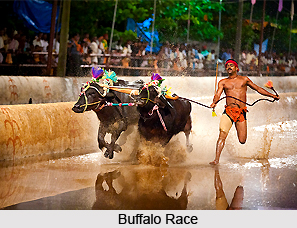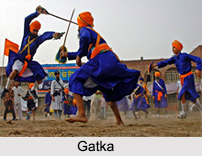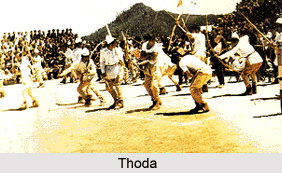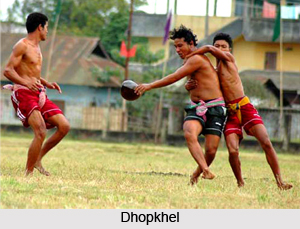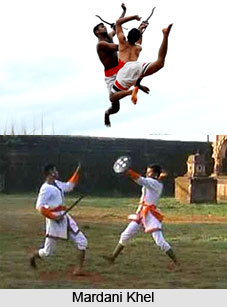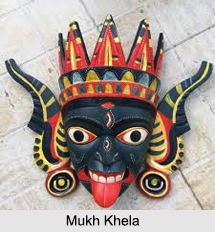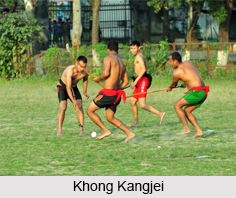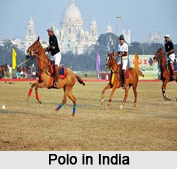 Polo came to India with the hands of British East India Company"s officials. But from some sources, it is found that Polo has an ancient origin. The kings of Manipur and the Mongoloid races used to play polo from ancient eras. The Indian state of Manipur is considered to be the birthplace of Polo, according to the English Guinness Book of World Records findings. Hence, Manipur is called as the `Home of Polo`.
Polo came to India with the hands of British East India Company"s officials. But from some sources, it is found that Polo has an ancient origin. The kings of Manipur and the Mongoloid races used to play polo from ancient eras. The Indian state of Manipur is considered to be the birthplace of Polo, according to the English Guinness Book of World Records findings. Hence, Manipur is called as the `Home of Polo`.
From `Sago Kangjei` to Polo
The traditional Manipuri game named `Sago Kangjei` is the mother of the modern day Polo. After its inception, the game earned huge popularity among the Indians, especially among the Indian emperors and kings. The game also became a tool to promote equestrian and military skills and it acted like a test of skill of princes and warriors.
Medieval History of Polo in India
The Mughal Dynasty in India played an important role in the rising of Polo as a popular game in India, during the medieval period. Among the great Mughal Emperors, Babur was a great polo player himself, and patronised Polo in India in a great way. Akbar too played a crucial role in supporting polo in India. He had set some rules for the game and also had a huge stable near Agra. Polo in India was considered as the national sport at that time. The builder of Qutub Minar, Sultan Qutub Uddin Aibak died of a fatal accident after a fall on the polo field in Lahore, which is located in modern Pakistan.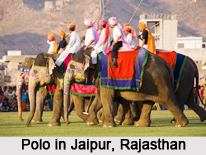
Modern History of Polo in India
During the British period, the famous British Captain Robert Stewart along with few British officers and tea planters brought the modern form of Polo known as `English Polo` in India. They brought the game at Silchar and Cachar District in Assam in 1859 and this is considered to be an important landmark in the history of polo in India. They learnt the game from the Manipuri military men, who were then living in Cachar along with the king, Maharaj Chandra Kirti Singh. The British rulers also set up a Polo Club at Borjalenga in Silchar, Assam, which is famous for being the oldest Polo club in the world. The modified form of polo started in India in 1863, when after two Manipuri teams played Sagol-Kangjei at Kolkata. Polo was also concentrated in the Indian states like Rajasthan, Punjab, Jammu and Kashmir, Assam and Madhya Pradesh.
Types of Polo in India
There are three different types of polo, which are played in the country, namely horse polo, camel polo and bicycle polo. Horse polo is a traditional game of the Indian state of Rajasthan, though today it is practised in the Indian cities like Mumbai, Kolkata and Delhi. The camel polo is being played in several regional fairs of Rajasthan, purely for the purpose of entertainment.
Rules of Polo in India
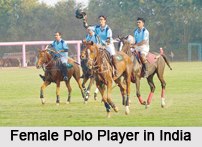 Rules of polo have been purposely kept simple in order to make people understand. In polo, the players play a ball game with a stick, while riding a horse. Two teams having four players on four horses play the polo in India. The ground of polo in India is generally of 230 to 275 metres in length and 146 to 180 metres in width.
Rules of polo have been purposely kept simple in order to make people understand. In polo, the players play a ball game with a stick, while riding a horse. Two teams having four players on four horses play the polo in India. The ground of polo in India is generally of 230 to 275 metres in length and 146 to 180 metres in width.
Rules and Regulations in The Manipuri Version of Polo
The rules and regulations in the Manipuri version of Polo that is Sagol Kangjei, is a bit different from that of modern Polo in India. In a Manipuri Polo game, two teams of seven members in each side play with a cane stick and the ball is made of bamboo root. The players wear tight dhotis tucked above the knees and a half sleeve local made jacket. They also wear white turbans on head. The two teams can wear only red and yellow clothes. There is no fixed size of field in Manipuri Polo.
Support of Indian Army towards Polo in India
Polo in India has been getting continuous support from the Indian Army and royal family members to continue with its heritage. The Indian polo also started getting sponsorship from the corporate sector during the 1990s. With this, the game became more glamorised and the Indian media also got attracted to the scenario of polo in India.
Polo in Urban India
The urbanization and modernization of Polo in India has actually maximized the reputation of the game and also attracted the young players to accept this game as their profession. India has produced many eminent and popular polo players so far. Devyani Rao is one of the most notable ones amongst them. This female Indian polo player has represented her country in many international events and earned lots of accolades too. The Jaipur Polo Ground in Delhi along with Delhi Race club has recently become major attraction point in every winter for the high profile players and sponsors gathering there to enjoy the game.
Equipments Used for Polo
The very basic set of equipments used for polo game includes: (for the player) helmet, boots, mallets and knee-guards; (for the horse): bridles, blankets, one saddle, wraps and (moving up): vehicle- stock trailer and pickup, extra tack.
Mallet
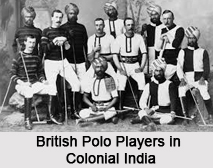 The mallet is made of a bamboo handle and wooden head which is about 51 inch long. Since there is a variation in grip of each player so the handles come with variety of diameters. The head is actually put on at 77.7-degree angle so that its lies flat on the ground when hitting the ball. The head can be oversize, extra oversize or regular. The ball used in polo game is 10 inches in circumference and is struck by the circular side of the mallet head. The ball that is used in case of indoor matches is actually of inflated leather and the circumference is 14.5 inches.
The mallet is made of a bamboo handle and wooden head which is about 51 inch long. Since there is a variation in grip of each player so the handles come with variety of diameters. The head is actually put on at 77.7-degree angle so that its lies flat on the ground when hitting the ball. The head can be oversize, extra oversize or regular. The ball used in polo game is 10 inches in circumference and is struck by the circular side of the mallet head. The ball that is used in case of indoor matches is actually of inflated leather and the circumference is 14.5 inches.
Saddle
The saddle used in the game is of English type with a regular girth and there is also over girth in order to prevent the saddle from slipping. Sometimes the reins are used to provide extra control to the players. These lengthen from the girth through the bridle rings to the player`s hands. Tendons or bandages boots are actually used to safeguard the lower part of the legs of the pony and the tail is bandaged in so as to prevent it from tangling up in the mallet strokes.
Other Equipments in Polo
Apart from the equipments of the riser and the horse in competition, there are other equipments as well which must be carefully considered like feeding and bedding, gloves and facemasks, sweatshirts, tee-shirts, coats and jackets, caps, trophies, sunshades, fleeces, whips, goggles, fencing, picnic baskets, stable equipments, saddle pads, fencing and numnahs.
Use of Polo Ponies in India
The modern polo has become very fast. So in order to keep pace with the contemporary game it is almost mandatory to have ponies, which will posses all the qualities to compete aggressively. Though half-breeds have better temperaments, more and more players are opting to play on thoroughbreds because of their speed. Things have never been better for the prospective buyer of polo ponies in India.
The polo pony is a term, which is a misnomer and goes back a long way when the game was played on small horses of 10 centimeters. This restriction was however lifted in 1908 but the term `ponies` have stayed. It is now a standard rule that a good polo pony should be well maintained, bred, nourished and posses the docility of a lamb, speed of a race horse, endurance of an Arab steed and agility of a show jumper.
All these attributes are not there when a horse is born. It has to be trained in a particular way in order to have these qualities.
